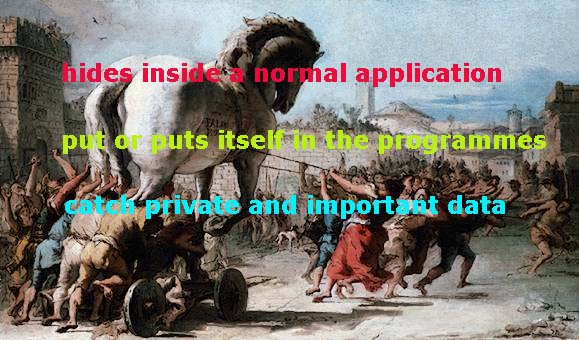What is a Trojan horse? Behind the historic meaning is there anything else?

Giandomenico Tiepolo - The National Gallery, Londra/Corbis
These programmes with a mythological name are very insidious because they are difficult to intercept. As the horse brought the Achei population inside the city walls of Trojans, the “Trojan” hides inside a normal application that causes serious damages (sometimes irreversible) to the hard disk. Usually a Trojan is put or puts itself in the programmes that we normally use. A Trojan [I1] [F1] hides in our software, systems and in general may catch private and important data. A Trojan is a concept as old as the computer history and started to become popular during the 80s with the diffusion of PCs and exploded with the net connection of PCs.
Usually Trojan horses are made of two files:
1. the server file that is installed on the victim’s PC,
2. the client file used by the “pirate” to send instructions that the server will carry out.
Trojans do not spread automatically as viruses or worms but they need a direct action of the attacker to make it arrive to the victim.
Often the victim looks and downloads accidentally a Trojan since the crackers like to put these “traps” on cracked videogames which are usually very popular.